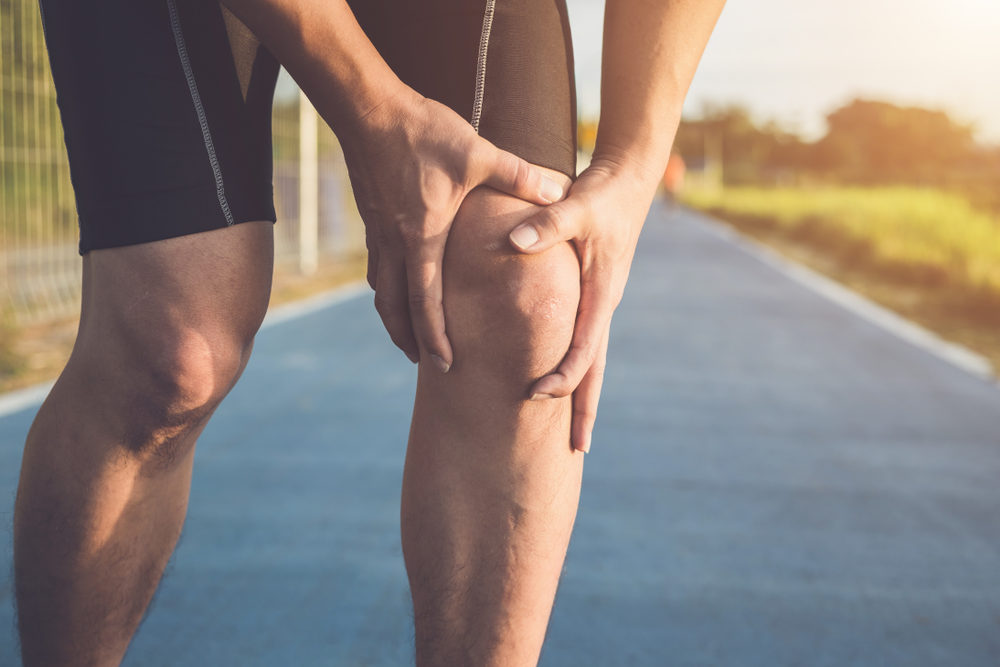IT band syndrome affects runners and office workers alike. Here’s how patients can identify the condition and reduce their discomfort.
The IT band is a thick rope of fibrous connective tissue that begins at the outside of the hip and ends just below the knee. It stabilizes the muscles surrounding the knee, enabling the joint to flex and rotate.
The IT band reacts to any tightness in the muscles supporting the hip and knee, such as the outer quads and glutes. Repetitive movement can cause friction between the IT band and the lateral femoral epicondyle, a bony spike at the side of the knee. When this irritation increases, patients often feel pain along the outside of the knee as they exercise. They may notice swelling, a stinging sensation around the knee, or a popping noise. IT band syndrome can also limit a patient’s range of motion.
WHAT CAUSES IT BAND SYNDROME?
IT band syndrome arises mostly from overuse injuries typically seen in long-distance runners, cyclists, or weightlifters. However, other issues can lead to the syndrome, including poor muscle flexibility or asymmetry in an individual’s anatomy that lengthens one leg beyond the other. These conditions can tense up the IT band, causing pain and discomfort.
In runners, IT band syndrome may result from an uneven gait. For example, a runner might have “knock knees,” which occur when one knee slides inward toward the other. Likewise, a cyclist whose toes rotate inward when secured in a pedal clip also puts extra pressure on the IT band.
To prevent IT band syndrome, runners can pull back on long runs or adjust their movement with the help of a trainer. Running on the same track every day may force a runner’s pelvis and knees out of alignment, so it’s recommended to switch paths often. Runners should also invest in supportive running shoes with strong insole padding or orthotics.
HOW IS IT BAND SYNDROME TREATED?
Conservative treatment options usually alleviate the discomfort of IT band syndrome. Patients can start with the RICE method (rest, ice, compression, and elevation) or take over-the-counter anti-inflammatory medications.
Exercises to stretch the IT band also help in treating the condition. The top choice is using a foam roller. Place the foam roller on the outside of the thigh and then move it along the IT band to ease tension in the tissue’s tender spots. There are other exercises to try as well, including:
- Stand upright with legs crossed, with the painful leg in the rear. Then, lean away from the affected side so the IT band stretches along the outside of the leg. Hold for 30 seconds and repeat five times.
- Strengthening the hip muscles keeps the IT band strong. The “clam” is one exercise that helps stabilize the hips and protects the knees from strain. Lying sideways with knees bent at a 90-degree angle, the patient tilts a leg up to the ceiling while keeping the ankles together. Repeat 20 times on each side.
Although an MRI is generally not necessary to diagnose IT band syndrome, a specialist may advise running the test to rule out other problems, such as torn cartilage. A physical therapist can also pinpoint whether a muscle or anatomical imbalance is causing IT band syndrome, and therefore prescribe exercises and ways to counteract those conditions.
Only in rare cases is surgery recommended for IT band syndrome. If needed, a surgeon makes a series of small incisions into the skin surrounding the IT band and then repairs the tissue by removing any scars or inflammation. Since it’s an arthroscopic procedure, patients generally recover within a few weeks.
If you’re suffering from hip or knee pain due to IT band syndrome, the experienced doctors and physical therapists at New York Bone & Joint Specialists can help. After diagnosing the condition, they’ll recommend therapy customized for your individual needs, so you can get back to the running track as soon as possible. Get in touch with us today to set up a consultation.




